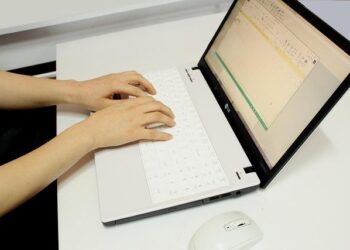Knowing how walking affects vision may aid with early neuromuscular or psychiatric disorder diagnosis, age-related changes in mobility, and the development of sports science and athletic training protocols.
Neuroscientists found a connection between how we see and how we walk. Their study in Nature Communications reveals that our brain processes vision rhythmically, syncing with our steps. We see best and react quickly when switching efforts, but our vision blurs and reactions slow during phases.
Lead author Dr Matthew Davidson from the School of Psychology at the University of Sydney said: “This work reveals a previously unknown relationship between perception and movement. It bridges a gap between experimental psychology and our everyday behavior.”
According to the study, our brain processes information from the outside world similarly to that of a strobe light, combining various images to create a seamless experience. However, it also demonstrates how walking modifies our eyesight, which impacts our actions and choices.
Dr. Davidson explained that although we perceive vision as a smooth flow, much activity is happening beneath the surface, akin to a duck swimming on a pond. This study builds on previous research from the same lab, showing that our brain samples vision and sound in cycles, about eight times per second.
Professor Alais emphasized the new finding: “Our brain’s sampling slows down to match our steps as we walk. Typically, humans take about two steps per second, and this rhythm aligns with the oscillations in visual sensitivity, occurring at about two cycles per second. Some participants showed changes at four cycles per second, synchronizing with their step cycle.”
This study is the first to continuously sample visual perception while walking, made possible by virtual reality technology and motion tracking. Dr. Davidson noted that our vision goes through good and bad phases with each step.
It’s unknown why walking and perception are so closely related. However, Professor Alais hypothesizes that eyesight may give way to motor control with each stride as the body prepares for the next move. Once in the swing phase between steps, the brain prioritizes perceptual sampling, syncing with our step rate. These findings raise further questions about how sound, touch, and neural activity might also change as we walk, which the research team plans to investigate.
The research team plans to explore these questions further to better understand their implications. Dr. Davidson suggests investigating whether perception changes more in older adults, who often struggle with balance.
They also see potential in using VR headsets for diagnostic tests for neuro-muscular disorders or psychiatric illnesses. This research could also benefit sports science by optimizing decision-making in athletes. Despite advancements, the mystery remains: why does our conscious perception seem seamless despite our brain’s rhythmic sampling?
Professor Verstraten suggests that our brain predicts what we should see, filling in the gaps. However, more research is needed to gain a deeper understanding.
Researchers studied 45 subjects walking in a virtual environment along a 10-meter path. During each 9-second walk, subjects responded to random visual stimuli. Eye and head movements, as well as walking information, were tracked. Data from 38 subjects showed reduced perception of footfall 83% of the time.
The study shows that our vision changes rhythmically when we walk, known as foot-eye coordination. This affects how we perceive our surroundings. Further research could explore how these vision changes impact tasks like coordination and decision-making while walking.
Journal reference:
Davidson, M.J., Verstraten, F.A.J. & Alais, D. Walking modulates visual detection performance according to stride cycle phase. Nature Communications. DOI: 10.1038/s41467-024-45780-4.
>>> Read full article>>>
Copyright for syndicated content belongs to the linked Source : Tech Explorist – https://www.techexplorist.com/foot-eye-coordination-staying-vision-adapts-walking/81877/































